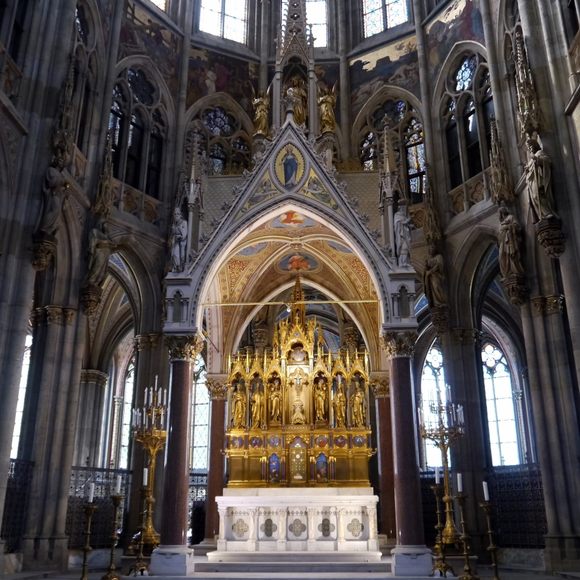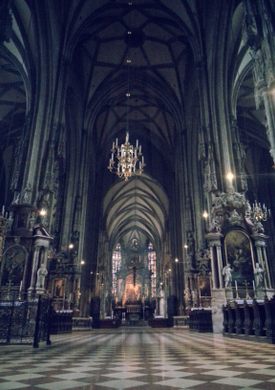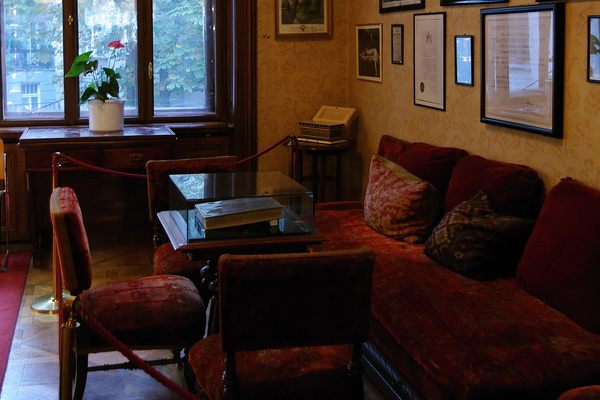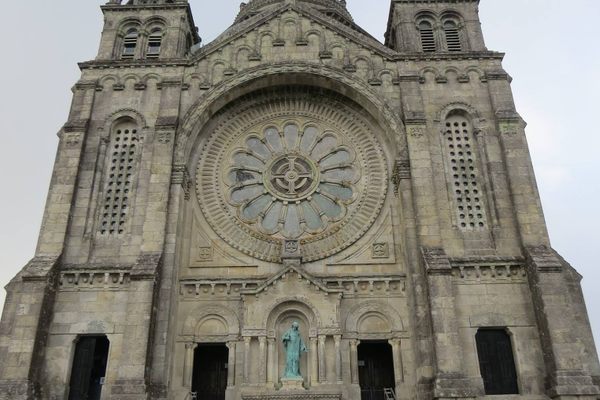Votivkirche (Votive Church)
A neo-Gothic church built to thank God for saving the Emperor of Austria from an assassination.
This neo-Gothic church, located on the Ringstraße in Vienna, was built as a votive to thank God for saving Kaiser Franz Joseph from an attempted assassination.
Franz Joseph was Emperor of Austria, and King of Hungary, Croatia and Bohemia from 2 December 1848 until his death on 21 November 1916. The young Franz Joseph liked to stroll around the old fortifications of the Hofburg Palace in Vienna. On the 18th of February 1853 the Emperor was walking with one of his officers, count Maximilian O’Donnell, when a Hungarian nationalist János Libényi approached him. Libényi attacked the Emperor from behind by stabbing him in the neck with a dagger.
Count O’Donnell reacted straightaway and stroked Libényi down with his sabre. As Libényi was being led away by the police guards, he yelled in Hungarian: “Long live Kossuth!” Kossuth Lajos was a Hungarian lawyer, journalist, politician and Governor-President of the Kingdom of Hungary during the revolution of 1848–49. The aim of the revolution was to gain independence from the Austrian Empire in the name of their ancient liberties.
Although the attack left the emperor bleeding from a deep wound, the blow was deflected by the Emperor’s uniform collar. The Emperor customarily wore a uniform, which had a high collar with heavy golden embroidery and that almost completely enclosed the neck. Therefore, the assassination attempt failed and the emperor survived. In gratitude for the salvation of His Majesty, his brother, Archduke Ferdinand Maximilian, initiated a campaign to build a new church on the site of the attack. Funds for construction were solicited from all over the Empire. The church was inaugurated in 1879 on the silver anniversary of Emperor Franz Joseph and his wife Empress Elisabeth.
The most impressive part of the church is the main altar with the gilded retable and elaborately painted ciborium over it supported by six alabaster columns. The tabernacle’s enameled panels depict two scenes from the Old Testament: the Sacrifice of Isaac and the dream of Joseph. The Walcker-Organ built in 1878 is a beautiful addition.



































Follow us on Twitter to get the latest on the world's hidden wonders.
Like us on Facebook to get the latest on the world's hidden wonders.
Follow us on Twitter Like us on Facebook